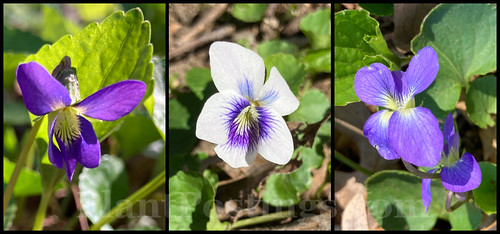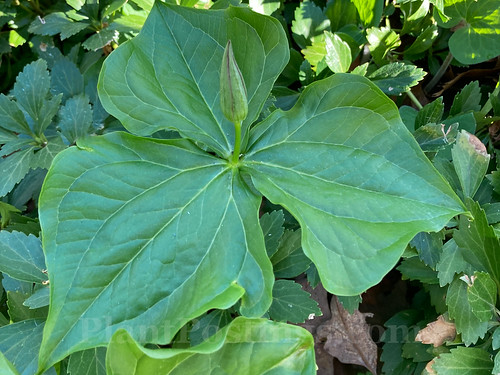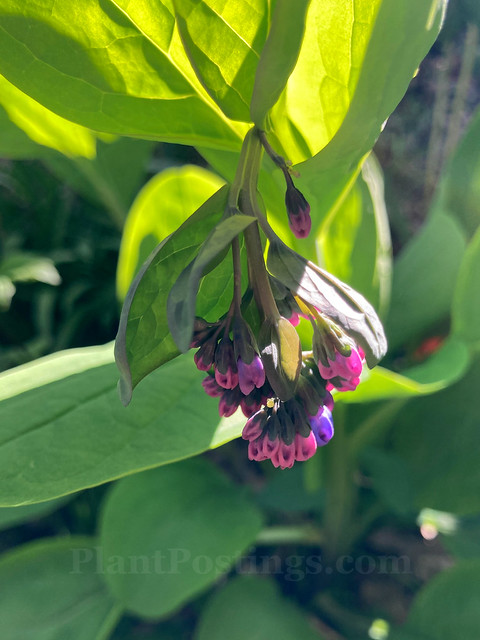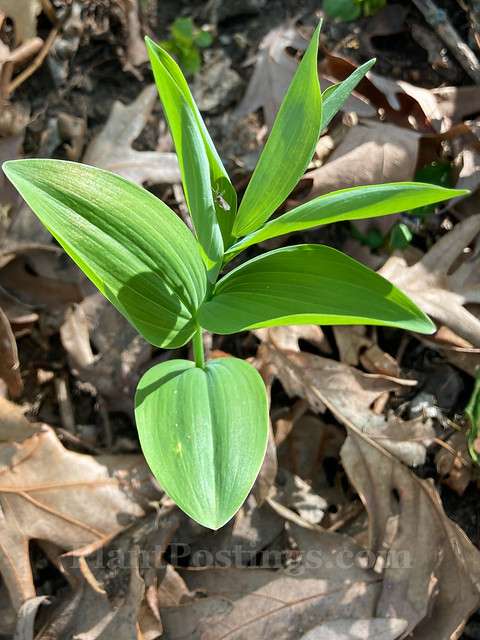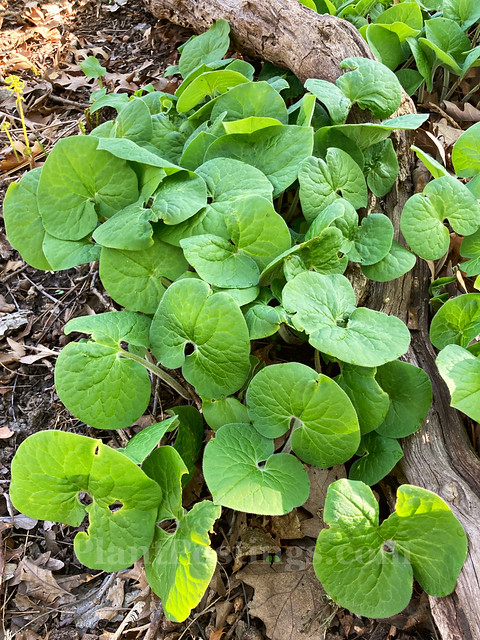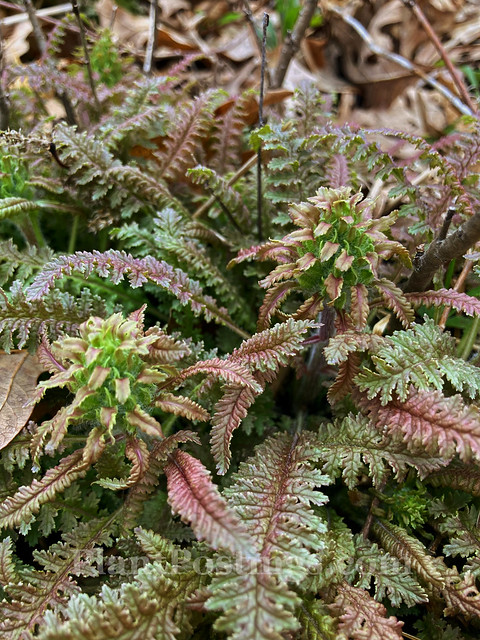
Our woodland is alive with wildflowers. Once again, I'm including only native plants for this Six on Saturday post, because this is the most active time for wildflowers—before the trees fully leaf out. Trilliums are the stars of the show, including Great White Trillium (T. grandiflorum), in the photo above.

Red Trillium (T. erectum) is another thriller, and its naturally occurring patch (planted by nature) appears to be spreading.

It's said that when Mayapples' (Podophyllum peltatum) umbrella foliage flattens out, Morel mushrooms are nearby. I've never found the mushrooms in our woodland, though the Mayapples certainly form a colony on the hill.

The Mayapples aren't blooming yet, but the buds are about to break.

Next, I'm cheating and including a mix of Violets (Viola spp.) as one of my "six," since there are so many colors and several species on the property. I believe the purple and white ones shown here are V. sororia and the yellow is V. eriocarpa.

Jack-in-the-Pulpit (Arisaema triphyllum) is another reliable return visitor every year. Its unique form always fascinates me.

Most Virginia Bluebells (Mertensia virginica) range from pink to lavender to bright blue. But there's a patch of the less-common white ones in our woods, which I think are as beautiful as the others.

How about you? What's blooming in your garden and on your property? For more examples from around the world, visit Garden Ruminations.


























